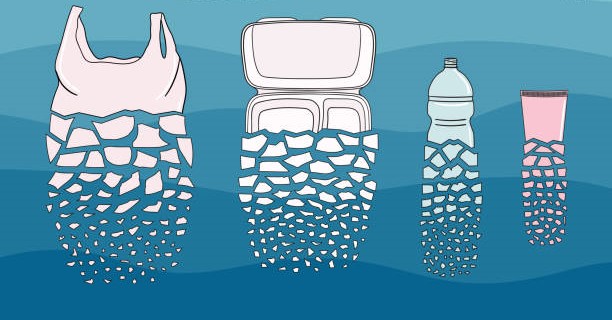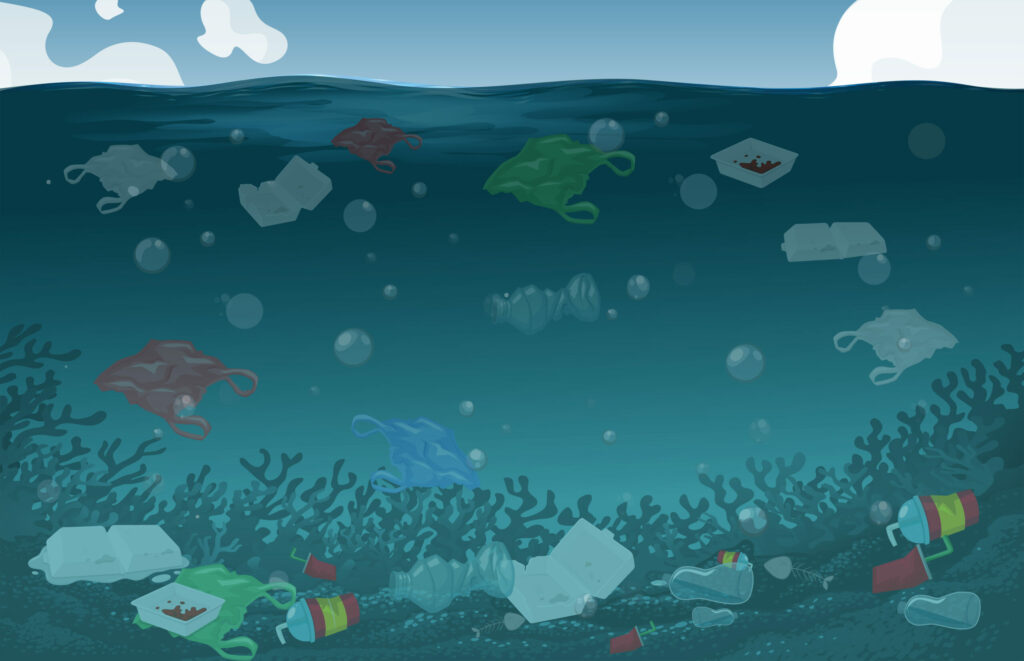The world is experiencing an increase in pollution. Every year, more than 430 million tons of plastic is produced, of which two-thirds quickly become waste, such as polythene bags. Microplastics are responsible for this plastic pollution, which is hazardous to both human health and the environment.
Microplastics are tiny particles of plastic that are found in everyday items such as clothing, cigarettes, cosmetics, and more. According to the United Nations Environment Program (UNEP), the continuous use of these items is leading to a significant increase in plastic pollution in the environment.

Today (June 5th) is World Environment Day, with a focus on addressing plastic pollution.
Microplastics pose a threat to the environment and human health. They can have a diameter of up to five millimeters. Leakage from plastic production factories or improper disposal of plastic waste can lead to their entry into the oceans. This has a direct impact on the food chain. When birds, fish, or marine organisms ingest microplastics, they exhibit toxic and mechanical effects.
As a result, these organisms experience reduced appetite, changes in behavior, and genetic mutations (alterations in DNA). Breathing difficulties can also occur. Humans also consume seafood, and consequently, microplastics enter the human body. When we breathe, drink water, or even through skin contact, our bodies absorb these microplastics. They have been found in various human organs, including the placenta of newborn babies.
Microplastics refer to the small particles of plastic.
Microplastics have a detrimental impact, especially on women’s health, due to the chemicals present in them. According to the UNEP’s 2021 report, microplastics and their chemicals have a negative effect on health, particularly on women’s health. They directly affect human genetics, respiratory rate, and mental development.
Leticia Carvalho, the head of UNEP’s Marine and Freshwater Branch, states that the threat to humans, along with marine life, due to microplastics and its chemicals, has only just begun. It can be prevented from spreading, and efforts should be made in this direction. This will ensure the long-term well-being of humans, wildlife, and ecosystems.

Leticia Carvalho, the head of UNEP’s Marine and Freshwater Branch, states that the threat to humans, along with marine life, due to microplastics and its chemicals, has only just begun. It can be prevented from spreading, and efforts should be made in this direction. This will ensure the long-term well-being of humans, wildlife, and ecosystems.
The connection between microplastics and items such as clothing, cigarettes, and cosmetics:
Cigarette waste is the most significant contributor to coastal pollution. Microplastics are also known as cellulose acetate fibers, mainly found in cigarette filters. Every year, approximately 10 billion people worldwide consume 6 trillion cigarettes, resulting in the widespread presence of these fibers. Cigarette waste is the largest contributor to coastal pollution. As a result, marine ecosystems are highly vulnerable to microplastic leakage.
Around 9% of microplastics found in the sea come from clothing. Plastic is also present in fabrics made from polyester, nylon, and acrylic. Around 60% of the global clothing market consists of these fabrics. In the case of clothing, microplastics are referred to as microfibers. These microfibers are released when polyester, nylon, and acrylic garments are worn or washed.
The sample of water from the South Atlantic Ocean shows both plankton and microplastics.

